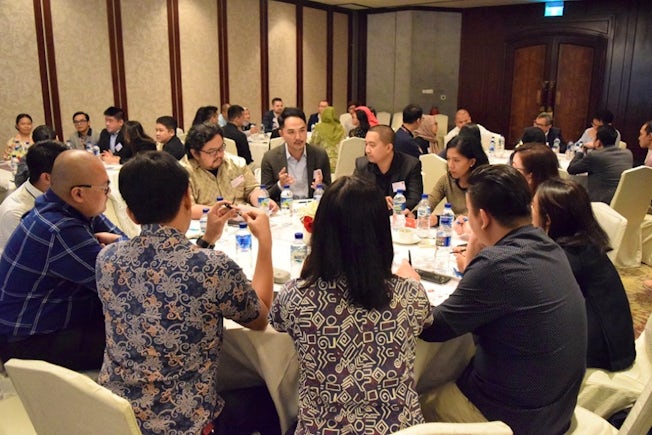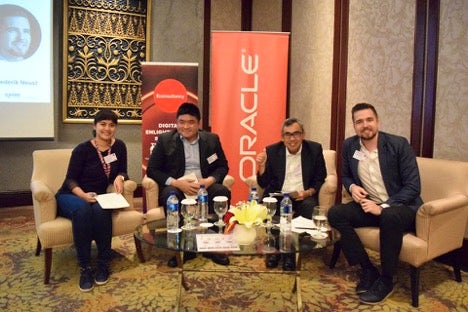Every year, the number of companies which make up the marketing technology (‘martech’) landscape has grown.
According to chiefmartec.com, the number of digital marketing systems and platforms has grown from 150 in 2011 to more than 7,000 in 2019.
With so much technology to choose from, how are marketers coping? Are they able to correctly identify the solutions they need and integrate them – or are they avoiding new tech due to overwhelming complexity?
To find out, Econsultancy, in association with Oracle, recently held roundtable discussions with client-side marketers in Jakarta, Indonesia. At the Harnessing Technology table, hosted by Wira Pradana, Co-founder & Owner, Eva.id, attendees shared their views on how brands are evaluating new marketing technologies and choosing which to add to their ‘martech’ stack.
Below is a summary of the day’s discussions:
1) The best reason to invest in marketing tech is to improve the customer experience
Participants opened the discussion by discussing the various technologies they have been testing recently. One delegate said that with all the new martech available it was easy to be tempted by every ‘shiny new object’, most of which promised to improve marketing performance.
But, said another, marketers should be very careful about investing in martech which doesn’t change the customer’s experience with the brand materially. Reason being that every new addition to the martech stack introduces risk. Even small changes to the back end can result in problems on the front end.
Instead, everyone agreed, marketers should prioritize tech which makes their customer’s life easier.
Also, when implementing new martech, marketers need to look at customer metrics, such as user retention, CSAT scores or Net Promoter Scores, to make sure the ‘improvement’ doesn’t harm the brand’s existing customer relationships.

2) A good martech stack can also solve other problems
In addition to improving the customer experience, marketers should also look for martech which solves some of their own problems.
One participant provided an example. If a company has separate systems for web and email, they would gain enormously from investing in a marketing automation system which combined the two. Once deployed, this addition to the martech stack would make it much easier for marketers to ask for (and hopefully to get) more customer information and deliver ‘more intelligent’ messages.
Another delegate said that marketers should be careful, though. New martech platforms which require many integration points may end up making the tech stack more difficult to manage. The table agreed that a well-designed pilot programme could help prevent a situation where new martech made the marketer’s job more difficult to do.

3) Start small when adding to your martech stack
Another related point brought up by one attendee was that marketers should ‘think small’ when looking to adopt new technology. That is, they should look for a specific problem which the new technology would solve and build a prototype solution to make sure it does so.
For example, one participant said that his company, a retailer, had recently piloted a new system which provided ‘e-receipts’ to customers. Instead of including everything that was possible, such as bespoke offers and mapping online and offline journeys, the marketing team simply focused on the question – “does this improve our customers’ in-store experience?”
Following the trial, the answer was clearly ‘yes’, customers preferred an e-receipt even though it meant providing personal information at the point of purchase. Once adopted, marketers then sought to leverage the new customer data in many other ways.
4) Learn from other companies which are leading the way
Indonesia, like most markets, now has many companies who are all competing for the consumer’s attention and money. Because of the fierce competition, said one delegate, they each have had to invest heavily in technology to create the best customer experience.
Companies like Grab, GoJek and Tokopedia all now have well-designed apps which provide information, shopping and ecommerce – and advertise frequently across all digital platforms.
Instead of trying to invent everything from scratch, suggested one attendee, marketers should see what these more advanced companies are doing and emulate them. Doing so will allow marketers to see what is already working at other companies when they are deciding which martech to adopt.

5) Keep the focus on return on investment (ROI)
Finally, participants discussed how they should get additional budget once they have identified new, promising marketing technology.
One delegate said that to get funding, marketers must always think first – ‘how will this make more money for my company’. This requires evaluating costs and benefits and making revenue projections.
If marketers are finding it difficult to do this then, suggested another, they should work with the vendor to come up with a business plan which clearly links the cost of the technology with new revenue.
Finally, when speaking to finance or operations, marketers need to focus on a business, not technology, case for investing in the new system.
A word of thanks
Econsultancy would like to thank Wira Pradana, Co-founder & Owner, Eva.id, for moderating the Harnessing Technology table and Oracle for hosting the day’s event.
We’d also like to thank all the marketers who attended on the day and openly discussed their experiences with adopting new technologies at their company. We hope to see you all at future Econsultancy events!
